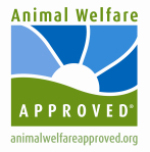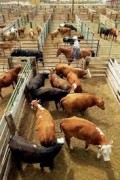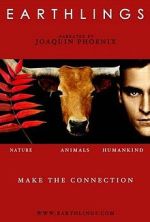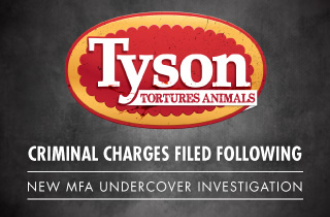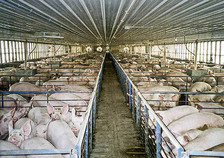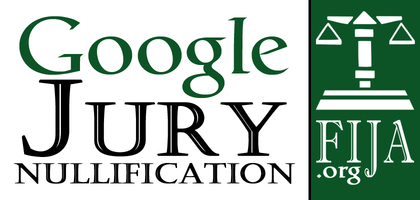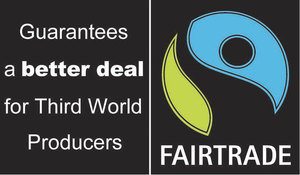Animal Rights - Animal Welfare - Humane Treatment
Great information about animal law, for Florida and beyond.
PETA - People For The Ethical Treatment of Animals
Almost all of us grew up eating meat, wearing leather, and going to circuses and zoos. We never considered the impact of these actions on the animals involved. For whatever reason, you are now asking the question: Why should animals have rights? Read more
What Emily Saw Will Stay With You Forever
One woman's search to uncover the truth put her life on a course she never expected. See what happened to Emily, in one of the most powerful videos you will ever watch.
(Sep 22, 2015)
Food, Inc.
Wikipedia
Food, Inc. is a 2008 American documentary film directed by filmmaker Robert Kenner.[3] The Academy Award-nominated film examines corporate farming in the United States, concluding that agribusiness produces food that is unhealthy, in a way that is environmentally harmful and abusive of both animals and employees. The film is narrated by Michael Pollan and Eric Schlosser.[4][5]
The film received positive response and was nominated for several awards, including the Academy Award and the Independent Spirit Awards in 2009, both for Best Documentary Feature.
Content
The film's first segment examines the industrial production of meat (chicken, beef, and pork), calling it inhumane and economically and environmentally unsustainable. The second segment looks at the industrial production of grains and vegetables (primarily corn and soy beans), again labeling this economically and environmentally unsustainable. The film's third and final segment is about the economic and legal power, such as food labelling regulations of the major food companies, the profits of which are based on supplying cheap but contaminated food, the heavy use of petroleum-based chemicals (largely pesticides and fertilizers), and the promotion of unhealthy food consumption habits by the American public.[3][6] It shows companies like Wal-Mart transitioning towards organic foods as that industry is booming in the recent health movement.
............................Down on the Factory Farm........................
Cross-posted on Sardonicky
Justice Network Editorial
by Neil Gillespie
April 25, 2012
The Normalization Of Violence Toward Farm Animals Is Unacceptable In A Civilized Society
Many people are uniformed about farm animals, slaughterhouses, factory farms, industrial animal agriculture, and the normalization of violence accepted to put dinner on the
table. Videos go a long way in understanding the killing of animals for human use, like those from Paul McCartney, Dr. Temple Grandin, bloggers, animal welfare organizations and
filmmakers.
The book Eternal Treblinka, and others, describe the horrible suffering animals endure everyday in
industrial factory farms. As Mark Bittman wrote in "The Human Cost of Animal
Suffering" in the New York Times, "…once we accept that farm animals are capable of suffering (80 percent of Americans believe this to be true), we
might well wonder what they’ve done to deserve such punishment."
Bittman interviewed Timothy Pachirat, author of "Every Twelve Seconds:
Industrialized Slaughter and the Politics of Sight". Pachirat worked five months in an Omaha slaughterhouse. Pachirat "took the job not as an animal rights activist but as a doctoral candidate in
political science seeking to understand the normalization of violence."
Bittman wrote "The most publicized stories about industrial agriculture represent the exceptions that prove the rule: the uncommon torture of animals by perverse
individuals in rogue operations. But torture is inherent in the routine treatment of animals as widgets, and the system itself is perverse. What makes "Every Twelve Seconds" different from (for
example) a Mercy for Animals exposé is, says Pachirat, "that the day-in and day-out experience produces invisibility. Industrialized agriculture perpetuates concealment at every level of the process,
and rather than focusing on the shocking examples we should be focusing on the system itself.""
A video by Dr. Grandin discusses humane methods of animal
dispatch. A video by Dax Jorgenson shows the humane butchering of a live hog from killing the
animal to completion. Another video by Terrence Malachy shows the utterly inhumane killing of a
hog. This is hard to watch, and the authorities should investigate this outrageous torture of an innocent animal.
There are alternatives to the normalization of violence accepted to put dinner on the table. The first step is this admission: The normalization
of violence toward farm animals is unacceptable in a civilized society. Next, humane methods of animal farming and animal killing must be employed. For others, vegetarianism or veganism is
the way to stop the normalization of violence toward farm animals.
David Aman of Krewe De Food made this point on the KDF Chicken Killing Demonstration blog post:
"Everyone who eats meat should participate periodically in its killing. If you're not a vegetarian then do yourself a favor and eat something that you kill. There would
be a lot less meat consumption if us omnivores were a little more attached to the killing portion of our meat consumption. The industrialization of our food is doing something to our subconscious;
can't say exactly how it has and will effect us but it can't be good.."
As John Cassidy said on the KDF "How to kill a chicken" video, "It's not fun... but it's how life goes on without Walmarts."
Mark Bittman described a similar reaction: "Pachirat says he has changed as a result of his experience, becoming increasingly interested in what he calls "distancing
and concealment." He now intends to work on those issues as they relate to imprisonment, war, torture, deployment of drones and other sophisticated weaponry that allow impersonal killing. And it’s
because these connections make so much sense that we should look more carefully at how we raise and kill animals."
Could the normalization of violence toward farm animals explain other undesirable aspects of our society, like torture, perpetual war, and the highest incarceration rate in the world? Is it any coincidence that corporations are also involved with perpetual war, incarceration, and industrial factory farms?
My conversion to vegetarianism began during a hunger strike in January 2012, followed by watching videos
like Earthlings and Mercy for Animals that show the horrible
violence farm animals suffer. Subsequently my desire to eat animals diminished.
Killing sentient beings like farm animals should not be taken lightly. Alexia Allen of Hawthorn
Farm shows the respectful harvest of a chicken in her video. Farm Sanctuary has a petition to President Obama, End factory farming!, urging
reforms to our food system recommended by the National Conference to End Factory Farming.
In this 2012 presidential election year we should be discussing this important issue, the normalization of violence toward farm animals. This issue may have wider implications for all of us.
The Human Cost of Animal Suffering
The Human Cost of Animal Suffering
The New York Times, Opinionator
By MARK BITTMAN
March 13, 2012
Until a couple of years ago I believed that the primary reasons to eat less meat were environment- and health-related, and there’s no question that those are valid
reasons. But animal welfare has since become a large part of my thinking as well. And I say this as someone not known to his friends as an animal-lover.
If we want a not-too-damaged planet to live on, and we want to live here in a way that’s also not too damaged, we’re better off eating less meat. But if we also want a
not-too-damaged psyche, we have to look at how we treat animals and begin to change it.
We can start by owning up to the fact that our system is industrialized. And as horrible as that word — "industrialized" — seems when applied to what was once called
animal husbandry, it is precisely the correct term. Those who haven’t seen this, or believe it to be a myth perpetrated by PETA, might consider reading "Every Twelve Seconds: Industrialized Slaughter and the Politics of Sight," recently published by Timothy Pachirat.
(This isn’t a review, but the book is superbly written, especially given the grimness of the subject.)
You might think that "every 12 seconds" refers to the frequency with which we kill animals, but in a moment you’ll realize that that’s impossible: we process more
than nine billion animals each year — hundreds per second. No, 12 seconds is the frequency with which the Omaha slaughterhouse where Pachirat worked for five months killed cattle, a total of around
2,500 per day.
Pachirat, whom I interviewed by phone earlier this week, took the job not as an animal rights activist but as a doctoral candidate in political science seeking to
understand the normalization of violence. Like others, he concluded that our isolation from killing allows us to tolerate unimaginably cruel practices simply because we don’t see them. But Pachirat
emphasizes that it’s not only we — consumers — who are isolated from the killing, but workers: at his plant only seven people out of 800 were directly involved with live cattle, and only four with
killing.
Not that the other workers have it easy: "Every Twelve Seconds" shatters any belief you might have about the system treating animals with a shred of decency. "The sheer
volume, scale and rate of killing," Pachirat told me, "the way the animals form a continuous stream rather than individual creatures, makes it clear the animals are seen as raw material. The cattle
are called ‘beef’ even while they’re alive — and that not only protects people from acknowledging what they’re doing and that they’re doing it to sentient beings, it’s also accurate, a reflection of
the process itself."
Our assertion of our right to treat animals as we do iron or lumber or car doors — to treat them as widgets — is not cannibalism, but it’s hardly consistent with our
keeping of adored pets.
Meat-eaters may assert that this is somehow justifiable, because we "need" to eat meat — just not cats or dogs or goldfish — to live. And even though we don’t (in fact,
there’s increasing evidence that too much of it is harmful; more on that later this week), we have
more than two million years of tradition to point to, we have bodies that process meat well and even thrive on it in limited amounts and we have a love of eating animal flesh that for most of us may
not go away any time soon.
None of which justifies egregious maltreatment. (Yes, vegan friends, I get that killing animals, period, is maltreatment. This ambivalence, or hypocrisy if you prefer,
is for every ambivalent or hypocritical omnivore or flexitarian a puzzle, and scale is an issue.) That maltreatment must first be acknowledged in order for us to alleviate it.
And that acknowledgment is forthcoming. The allure — and habit! — of meat-eating may be too strong for most of us to give it up, but recognizing its consequences is a
move toward a middle ground: a place where we continue to eat animals but exchange that privilege (that’s what it is) for a system in which we eat less and treat them better, one that allows our
children to make more humane decisions. Because once we accept that farm animals are capable of suffering (80 percent of Americans believe this to be true), we might well wonder what they’ve done to
deserve such punishment.
The most publicized stories about industrial agriculture represent the exceptions that prove the rule: the uncommon torture of animals by perverse individuals in rogue
operations. But torture is inherent in the routine treatment of animals as widgets, and the system itself is perverse. What makes "Every Twelve Seconds" different from (for example) a Mercy for
Animals exposé is, says Pachirat, "that the day-in and day-out experience produces invisibility. Industrialized agriculture perpetuates concealment at every level of the process, and rather than
focusing on the shocking examples we should be focusing on the system itself."
At that point we might finally acknowledge that raising, killing and eating animals must be done differently. When omnivores recognize that our way of producing and
eating meat reduces not only slaughterhouse workers but all of us to a warped state, we’ll be able to bring about the kind of changes that will reduce both meat consumption and our collective
guilt.
Pachirat says he has changed as a result of his experience, becoming increasingly interested in what he calls "distancing and concealment." He now intends to work on
those issues as they relate to imprisonment, war, torture, deployment of drones and other sophisticated weaponry that allow impersonal killing. And it’s because these connections make so much sense
that we should look more carefully at how we raise and kill animals.
"I didn’t get into this to focus on animal issues," he told me, "but my own relationship to eating meat has been transformed, and I now forgo it altogether. It’s just
not worth the pleasure when you know the system."
When we all know the system, we’ll be even more eager to change it. Read more. See the reader comment below, a NYT Pick
Comment by Farmer, NYT Pick
March 14, 2012 at 11:03am
"In my lifetime on the farm, we lived with animals and we died with the animals. Our every waking moment was devoted to the care of the cattle. Even as my late father
was dying, he asked non-stop how the cattle were being cared for. Life as it goes on on a regular farm is intertwined with new births, growth of the animals and ultimately death. For so many urban
people, life is sanitary...never touching upon the heartbeat or the end of the heartbeat."
"It used to be that animals sent to slaughter were selected and likely sent off to a slaughterhouse in your town where you knew the people working there or the owners.
Cattle were trucked a short distance and the job was done, quickly and without pain as best as we could know from occasional visits there."
"Now, things are far away, cattle must ride hours and hours from almost every rural town to massive plants owned by one of three huge companies, worked often by
immigrant workers, we lose complete touch with the final destination of our cow."
"Consumers, though, should acknowledge some of the role in the creation of this massive industrializing of agriculture. For decades, you have sat in silence and
disinterested in what was going on on the farm. As we older farmers warned of the creation of the consolidated massive food systems we see now, you all replied that you wanted food cheaper....and
cheaper... You have reaped what you have sown. I am hoping the younger generation will be able to turn the ship around."
- NYT food critic Frank Bruni has gout, Red Meat Blues
- NYT essay contest, Calling All Carnivores
Chicken police? Animals have complex social or pecking orders.
Wikipedia
A slaughterhouse, abattoir or meatworks is a facility where animals are killed for consumption as food. Slaughterhouses that process meat not intended for human consumption are sometimes referred to as knacker's yards or knackeries, used for animals that are not fit for consumption or can no longer work on a farm such as horses that can no longer work.
Slaughtering animals on a large scale poses significant logistical problems, and public health requirements and public aversion in many cultures influences the location of slaughterhouses.
Animal welfare and animal rights groups frequently raise concerns about the methods of transport, preparation, herding, and killing within some slaughterhouses under the example of animal rights activists such as Howard Lyman and Ric O’Barry. [1]
Productivity
Typically 45–50% of the animal can be turned into edible products (meat). About 5-15% is waste, and the remaining 40–45% of the animal is turned into byproducts such as leather, soaps, candles (tallow), and animal glue....
...Design
In the latter part of the 20th century, the layout and design of most U.S. slaughterhouses was influenced by the work of Dr. Temple Grandin.[12] She suggested that reducing the stress of animals being led to slaughter may help slaughterhouse operators improve efficiency and profit.[13] In particular she applied an understanding of animal psychology to design pens and corrals which funnel a herd of animals arriving at a slaughterhouse into a single file ready for slaughter. Her corrals employ long sweeping curves[14][15][16] so that each animal is prevented from seeing what lies ahead and just concentrates on the hind quarters of the animal in front of it. This design – along with the design elements of solid sides, solid crowd gate, and reduced noise at the end point – work together to encourage animals forward in the chute and to not reverse direction.[17]
As of 2011, Grandin claimed to have designed over 54% of the slaughterhouses in the United States as well as many others around the world.[citation needed]
Mobile design
By 2010 a mobile facility the Modular Harvest System had received USDA approval. It can be moved from ranch to ranch. It consists of three trailers, one for slaughtering, one for consumable body parts and one for other body parts. Preparation of individual cuts is done at a butchery or other meat preparation facility.[18]...
...Law
Most countries have laws in regard to the treatment of animals at slaughterhouses. In the United States, there is the Humane Slaughter Act of 1958, a law requiring that all swine, sheep, cattle, and horses be stunned unconscious with application of a stunning device by a trained person before being hoisted up on the line. There is some debate over the enforcement of this act. This act, like those in many countries, exempts slaughter in accordance to religious law, such as kosher shechita and dhabiha halal. Most strict interpretations of kashrut require that the animal be fully sensible when its carotid artery is cut.[citation needed]
The novel The Jungle detailed unsanitary conditions in slaughterhouses and the meatpacking industry during the 1800s. This led directly to an inJANEvestigation commissioned directly by President Theodore Roosevelt, and to the passage of the Meat Inspection Act and the Pure Food and Drug Act of 1906, which established the Food and Drug Administration. A much larger body of regulation deals with the public health and worker safety regulation and inspection.
Animal welfare concerns
In the year 1997 Gail Eisnitz, chief investigator for the Humane Farming Association (HFA),[22] released a book Slaughterhouse. Within, she unveils the interviews of slaughterhouse workers in the U.S. who say that, because of the speed with which they are required to work, animals are routinely skinned while apparently alive, and still blinking, kicking, and shrieking. Eisnitz argues that this is not only cruel to the animals, but also dangerous for the human workers, as cows weighing several thousands of pounds thrashing around in pain are likely to kick out and debilitate anyone working near them.[23]
This would imply that certain slaughter houses throughout the country are not following the guidelines and regulations spelled out by the Humane Slaughter Act, requiring all animals to be put down and thus insusceptible to pain by some form, typically electronarcosis, before undergoing any form of violent action.
According to the HFA, Eiznitz interviewed slaughterhouse workers representing over two million hours of experience, who, without exception, told her that they have beaten, strangled, boiled, and dismembered animals alive, or have failed to report those who do. The workers described the effects the violence has had on their personal lives, with several admitting to being physically abusive or taking to alcohol and other drugs.[24]
The HFA alleges that workers are required to kill up to 1,100 hogs an hour, and end up taking their frustration out on the animals.[24] Eisnitz interviewed one worker, who had worked in ten slaughterhouses, about pig production. He told her:
Hogs get stressed out pretty easy. If you prod them too much, they have heart attacks. If you get a hog in the chute that's had the shit prodded out of him and has a heart attack or refuses to move, you take a meat hook and hook it into his bunghole. You try to do this by clipping the hipbone. Then you drag him backwards. You're dragging these hogs alive, and a lot of times the meat hook rips out of the bunghole. I've seen hams — thighs — completely ripped open. I've also seen intestines come out. If the hog collapses near the front of the chute, you shove the meat hook into his cheek and drag him forward.[25]...
Larry’s Custom Meats is a modern, full service USDA-licensed slaughter and processing facility with a capacity of 5,000 head annually. Our climate controlled building was designed to have efficient production flow with the highest standards of food safety.
Larry’s Custom Meats is committed to the humane treatment of all animals entering our facility. We believe that when livestock is used for human benefit, they should be treated humanely.
Larry Althiser has more than 30 years experience working in slaughterhouses and as a meat cutter founded Larry’s Custom Meats in 2002. In April 2011, Larry’s Custom Meats became a USDA-licensed slaughterhouse!
The Humane Slaughter Act - 7 U.S.C. Chapter 48
NOTE: "Although more than 168 million chickens (excluding broilers) and around 9 billion broiler chickens are killed for food in the United States yearly,[3] the Humane Slaughter Act specifically mentions only cattle, calves, horses, mules, sheep and swine.[4]"
Humane Slaughter Act
Wikipedia
The Humane Slaughter Act, or the Humane Methods of Livestock Slaughter Act, (P.L. 85-765; 7 U.S.C. 1901 et seq.) is a United States federal law designed to decrease suffering of livestock during slaughter. It was approved on August 27, 1958.[1] The most notable of these requirements is the need to have an animal completely sedated and insensible to pain. This is to minimize the suffering to the point where the animal feels nothing at all, instead losing a consciousness from which it will never awaken. This differs from animal to animal as size increases and decreases. Larger animals such as bovine require a stronger method than chickens, for example. Bovine require electronarcosis or something equally potent, though electronarcosis remains a standard. The bovine would have a device placed on its head that, once activated, sends an electric charge that efficiently and safely stuns the animal.[2] Chickens, on the other hand, require much less current to be efficiently sedated and are given a run under electrically charged water. To ensure that these guidelines are met, The Food Safety and Inspection Service inspectors at slaughtering plants are responsible for overseeing compliance, and have the authority to stop slaughter lines and order plant employees to take corrective actions. Although more than 168 million chickens (excluding broilers) and around 9 billion broiler chickens are killed for food in the United States yearly,[3] the Humane Slaughter Act specifically mentions only cattle, calves, horses, mules, sheep and swine.[4]
Due to several reports of alleged non-compliance with these regulations and safety protocols, originating in the early 2000s, specifically late 2002[citation needed]. This caused the FSIS to assign additional veterinarians to various district offices to allow monitoring and alleging significant non-compliance, FSIS assigned additional veterinarians to its district offices specifically to monitor slaughter and handling procedures and to report to their headquarters about any issues of compliance. This has been the case ever since, as Congress passed a bill in 2002, The 2002 farm bill, that requires a compliance report to be submitted annually. In 2003, the initiative increased further as, in the FY in 2003, Congress voted in another $5 million operation to the FSIS effort and increased the amount of compliance inspectors by 50. Language in the FY 2004 consolidated appropriations act directs FSIS to continue fulfilling that mandate, and the FY2005 budget request calls for another $5 million to be allocated for enforcement activities. Despite these requirements in place, reports from January 2004 GAO have noted that there is still alleged non-compliance. These were narrowed down to select states that issues of non-compliance still allegedly persist (GAO-04-247). Earlier concerns about humane treatment of non-ambulatory (downer) cattle at slaughter houses became irrelevant when FSIS issued regulations in January 2004 (69 FR 1892) prohibiting them from being slaughtered and inspected for use as human food.[5] Read more
A documentary for an Animal Science Behavior class at UC Davis exploring the process of electrical stunning of pigs for slaughter.
The Humane Slaughter Act - 7 U.S.C. Chapter 48
7 USC Chapter 48 - Humane Methods of Livestock Slaughter
7 USC § 1901 - Findings and declaration of policy
The Congress finds that the use of humane methods in the slaughter of livestock prevents needless suffering; results in safer and better working conditions for persons
engaged in the slaughtering industry; brings about improvement of products and economies in slaughtering operations; and produces other benefits for producers, processors, and consumers which tend to
expedite an orderly flow of livestock and livestock products in interstate and foreign commerce. It is therefore declared to be the policy of the United States that the slaughtering of livestock and
the handling of livestock in connection with slaughter shall be carried out only by humane methods.
7 U.S.C. § 1902 - Humane methods
No method of slaughtering or handling in connection with slaughtering shall be deemed to comply with the public policy of
the United States unless it is humane. Either of the following two methods of slaughtering and handling are hereby found to be
humane:
(a) in the case of cattle, calves, horses, mules, sheep, swine, and other livestock, all animals are rendered insensible to
pain by a single blow or gunshot or an electrical, chemical or other means that is rapid and effective, before being
shackled, hoisted, thrown, cast, or cut; or
(b) by slaughtering in accordance with the ritual requirements of the Jewish faith or any other religious faith that
prescribes a method of slaughter whereby the animal suffers loss of consciousness by anemia of the brain caused by the
simultaneous and instantaneous severance of the carotid arteries with a sharp
instrument and handling in connection with such slaughtering.
7 USC § 1903 - Repealed
7 USC § 1904 - Methods research; designation of methods
7 USC § 1905 - Repealed
7 USC § 1906 - Exemption of ritual slaughter
7 USC § 1907 - Practices involving nonambulatory livestock
This is the first of three videos by dax21x (Dax Jorgenson) that shows the butchering of a live hog, from killing the animal to completion. This is not industrial factory farming, but a small independent operation, Jorgenson Meat Processing. This video shows how food animals were killed and butchered before industrial factory farming. Other videos show dax21x butchering a cow and a deer.
Terrence Malachy - inhumane pig slaughter
The authorities should investigate this outrageous torture of an innocent animal. Read the comments on YouTube
Captive bolt pistol
Wikipedia
A captive bolt pistol or gun (also variously known as a cattle gun, stunbolt gun, bolt gun, or stunner) is a device used for stunning animals prior to slaughter.
The goal of captive bolt stunning is to inflict a forceful strike on the forehead with the bolt in order to induce unconsciousness. The bolt may or may not destroy part of the brain.
The bolt consists of a heavy rod made of non-rusting alloys, such as stainless steel. It is held in position inside the barrel of the stunner by means of rubber washers. The bolt is usually not visible in a stunner in good condition. The bolt is actuated by a trigger pull and is propelled forward by compressed air or by the discharge of a blank round ignited by a firing pin. After striking a shallow but forceful blow on the forehead of the animal, spring tension causes the bolt to recoil back into the barrel.
The captive bolt pistol was invented in 1903 by Dr. Hugo Heiss, former director of a slaughterhouse in Straubing, Germany.[1]
Chickens, turkeys, ducks and other fowl are not protected by the Humane Slaughter Act.
Earthlings: Essential documentary on the treatment of animals by humans
Wikipedia
Earthlings is a 2005 American documentary film about humanity's use
of other animals as pets, food, clothing, entertainment, and for scientific research. The film is narrated by Joaquin
Phoenix, features music by Moby, was directed by Shaun
Monson, Executive Produced by Libra Max and was co-produced by Maggie Q, all of whom are vegan. A second installment is set for August 2015 titled Unity.[1] more
Earthlings Official Website
- Transcript for Earthlings
- 'Earthlings' Review, About.com Guide
- Compassion, Moderation, and Becky
- Gary Smith, 'training' of circus animals
CARTHAGE, Miss., Oct. 28, 2015 /PRNewswire/ -- Tyson Foods Inc. and six of its slaughterhouse workers face 33 counts of criminal animal cruelty after being caught on hidden camera violently punching, throwing, and maliciously torturing animals for fun. The covert footage, recorded by an undercover investigator with Mercy For Animals, was released yesterday at www.TysonTorturesAnimals.com. Among other disturbing abuses, the hidden-camera video shows improperly shackled chickens missing the kill blade and having their heads ripped off while they are still conscious and able to feel pain.
Candice Bergen Smacks Tyson Foods Over Horrific Chicken Slaughter
(video)
Animals Abused by Workers;
Company Responds
By Keith Girard, October 28th, 2015
Candice Bergen, veteran Hollywood actress and well-known activist, narrates a horrific video showing the slaughter of chickens inside a Tysons Food plant. The secretly recorded clip shocked the food processor, which immediately went into massive, crisis spin-control mode.
The video, which is rapidly going viral, was filmed by a Tyson’s employee and posted today (Oct. 28) by an organization called Mercy For Animals.
It’s been campaigning for some time now to force the corporate food processor to adopt more humane ways to slaughter animals. The chickens eventually end up in McDonald’s, KFC and your local supermarket. Read more
Candice Bergen Calls Out Tyson Foods For Animal Cruelty - Criminal Charges Filed Against Tyson
Mercy for Animals
Wikipedia
Mercy For Animals (MFA) is a national non-profit organization dedicated to preventing cruelty to farmed animals and promoting compassionate food choices and policies, founded in October 1999. Nathan Runkle is the group's executive director and founder.[1] Focusing primarily on advocacy on behalf of farmed animals, MFA runs a number of campaigns that aim to educate the public on animal protection issues and to encourage them to adopt a vegan diet.[2] It has engaged in several undercover investigations, primarily of egg farms, and has produced television commercials showing the treatment of animals in slaughterhouses and factory farms.[3] They have offices in Los Angeles, Chicago, New York City, Ohio, and Texas. MFA's national headquarters is located in Los Angeles. Read more
Respectful chicken harvest - Humane method of killing
Alexia Allen of Hawthorn Farm is a wilderness skills instructor who also has a small farm in Woodinville, Washington. I thought she did a really good job of
demonstrating a respectful harvest of a chicken. Read more
Respectful Chicken Harvest Part 2 of 2
Ag-Gag Laws - No Undercover Filming at Factory Farms
Hey Iowa, Undercover Videos At Factory Farms Should Not Be
Illegal
By Deborah Dunham
March 6, 2012
Iowa recently approved a bill that has outraged a lot of animal rights activists. And rightly so. House File 589 just passed in the state’s legislature and has reached
the governor’s desk. If signed, the measure would prevent people from photographing or filming a factory farm without the owner’s consent. Essentially, it would ban the undercover work that has
previously exposed animal abuse on factory farms. And now, that exposure could be a
crime.
Activists groups like PETA, Mercy for Animals and the Humane Society are urging people to ask Governor Terry Branstad to veto the measure because approving it would only
contribute to more animal abuse. Read more
_____________________________________________________
- PETA: Urgent, Don’t Let Iowa Hide Animal Abuse
- New York Times: Animals, Cruelty and Videotape
- Examiner.com: "Ag-gag" laws open the doors for factory farm cruelty even wider
70% of all Ground Beef Contains "Pink Slime"
70% of all Ground Beef Contains "Pink Slime"
... and USDA Bought 7 Million Pounds of the Stuff for School Lunches
Zero Hedge
by George Washington
March 11, 2012
"Pink slime," a cheap meat filler, is in 70 percent of the ground beef sold at supermarkets and up to 25 percent of each American hamburger patty, by some
estimates. Read more
Zero Hedge: Pink Slime Maker Files For Bankruptcy
Brightside Farm Sanctuary
Our mission is to raise the level of awareness with regard to the plight of millions of factory farmed animals in Australia and to make the world a kinder place for all
animals.
We hope that by opening our doors to school groups people will see that farm animals deserve the respect that many people reserve only for dogs and cats. Read more
Eternal Treblinka: Our Treatment of Animals and the Holocaust
Charles Patterson, Author
ETERNAL TREBLINKA: Our Treatment of Animals and the Holocaust, by Charles Patterson, Ph.D., describes disturbing parallels between how the Nazis treated their victims
and how modern society treats animals. The title is taken from the Yiddish writer and Nobel Laureate Isaac Bashevis Singer, himself a vegetarian: "In relation to them, all people are Nazis; for the
animals it is an eternal Treblinka."
The first part of the book describes the emergence of humans as the master species and their domination of the rest of the inhabitants of the earth. The second part
examines the industrialization of slaughter (of both animals and humans) that took place in modern times, while the last part of the book profiles Jewish and German animal advocates on both sides of
the Holocaust.
The Foreword is by Lucy Kaplan, a former attorney for People for the Ethical Treatment of Animals (PETA), who is the daughter of Holocaust survivors. Read more
- Eternal Treblinka Lantern Books
- Animal rights and the Holocaust Wikipedia
- Reviewed by Dr. Steven Best, University of Texas, Journal for Critical Animal Studies, Volume V, Issue 2, 2007 (PDF)
- Review by Richard H. Schwartz, Jewish Vegetarians of NA
- Review by Compassionate Spirit.com
- Review by Karen Davis, PhD
- Eternal Treblinka Goodreads
- Eternal Treblinka Barnes and Noble
- From Chapter Three: The Industrialization of Slaughter
Temple Grandin - American Doctor of Animal Science
Temple Grandin Official Website
Temple Grandin
Wikipedia
Mary Temple Grandin (born August 29, 1947) is an American professor of animal science at Colorado State University, best-selling author, autism activist and consultant to the livestock industry on animal behavior. She is the inventor of the "hug box", a device to calm those on the autism spectrum. In the 2010 Time 100 list of the one hundred most influential people in the world, she was named in the "Heroes" category.[2] She was the subject of the award-winning, biographical film, Temple Grandin. Read more
- Temple Grandin Official Website
- Temple Grandin HBO Documentary
- Joan Juliet Buck - Vogue story on Temple Grandin
- Temple Grandin - The 2010 Time Magazine 100
- An Ode to Temple Grandin, Jessica and Joshua Applestone
- Kill Them With Kindness, American Radio Works
Temple Grandin (film)
Wikipedia
Temple Grandin is a 2010 biopic directed by Mick Jackson and starring Claire Danes as Temple Grandin, a woman with autism who revolutionized practices for the humane handling of livestock on cattle ranches and slaughterhouses. Read more
Krewe De Food host John Cassidy - urban farmer
Krewe De Food host John Cassidy takes us through the basic points of building an urban flock. Stop by Hollygrove Market and Farm on Saturdays from 10-2 to visit the chickens. Read more
Krewe De Food host John Cassidy showing 2 of the most humane ways of killing chickens and processing them. As John says, "It's not fun... but it's how life goes on without Walmarts."
David Aman of Krewe De Food made this point on the KDF Chicken Killing Demonstration blog post:
"Everyone who eats meat should participate periodically in its killing. If you're not a vegetarian then do yourself a favor and eat something that you kill. There would
be a lot less meat consumption if us omnivores were a little more attached to the killing portion of our meat consumption. The industrialization of our food is doing something to our subconscious;
can't say exactly how it has and will effect us but it can't be good.." Read
more
What Cody Saw Will Change Your Life
One man's search to uncover the truth put his life on a course he never expected. See what happened to Cody, in one of the most powerful videos you will ever watch. (Aug-17-2015)
Is hunting the answer to over population of wildlife?
U.S. Department of Agriculture
National Agricultural Library
Invasive Species - Wild Boar
Scientific name: Sus scrofa Linnaeus, 1758 (ITIS)
Common name: Wild boar, wild hog, feral pig, feral hog, Old World swine, razorback, Eurasian wild boar, Russian wild boar. Read more
A PICKUP LOAD OF PIGS addresses the issue of wild pigs (Sus scrofa) as a nuisance species of growing concern. The film discusses the biology, behavior, and distribution of wild pigs, and the damage and threats they present to native wildlife, agriculture, forestry, and public health in the United States. It also provides landowners with instruction of legal methods for controlling wild pig populations and damage on their property. Finally, the film demonstrates to policy makers and the general public that wild pigs are in fact a nuisance species that cause considerable ecological and economic damage (current estimates = $1.5 Billion annually). Mississippi State University. (YouTube)
Hunting
Wikipedia
Hunting is the practice of killing or trapping any animal, or pursuing it with the intent of doing so. Hunting wildlife or feral animals is most commonly done by humans for food, recreation, or trade. In present-day use, lawful hunting is distinguished from poaching, which is the illegal killing, trapping or capture of the hunted species. The species that are hunted are referred to as game and are usually mammals and birds.
Hunting can also be a means of pest control. Hunting advocates state that hunting can be a necessary component[1] of modern wildlife management, for example, to help maintain a population of healthy animals within an environment's ecological carrying capacity when natural checks such as predators are absent.[2] However, hunting has also heavily contributed to the endangerment, extirpation and extinction of many animals.[3]
The pursuit, capture and release, or capture for food of fish is called fishing, which is not commonly categorised as a form of hunting. It is also not considered hunting to pursue animals without intent to kill them, as in wildlife photography or birdwatching. The practice of foraging or gathering materials from plants and mushrooms is also considered separate.
Skillful tracking and acquisition of an elusive target has caused the word hunt to be used in the vernacular as a metaphor, as in treasure hunting, "bargain hunting", and even "hunting down corruption and waste". Read more
Wild boar
Wikipedia
The wild boar (Sus scrofa), also known as the wild swine[3] or Eurasian wild pig[4] is a suid native to much of Eurasia, North Africa, and the Greater Sunda Islands. Human intervention has spread its range further, making the species one of the widest-ranging mammals in the world, as well as the most widely spread suiform.[4] Its wide range, high numbers, and adaptability mean that it is classed as least concern by the IUCN.[1] The animal probably originated in Southeast Asia during the Early Pleistocene,[5] and outcompeted other suid species as it spread throughout the Old World.[6]
As of 2005, up to 16 subspecies are recognised, which are divided into four regional groupings based on skull height and lacrimal bone length.[2] The species lives in matriarchal societies consisting of interrelated females and their young (both male and female). Fully grown males are usually solitary outside of the breeding season.[7] The grey wolf is the wild boar's main predator throughout most of its range except in the Far East, where it is replaced by the tiger.[8] It has a long history of association with humans, having been the ancestor of most domestic pig breeds and a big-game animal for millennia. Read more
Too Many Deer in Pennsylvania - The New York Times
Deer, The New York Times
"Too Many Deer in Pennsylvania," announced a headline in The New York Times. The article went on to explain how white-tailed deer had eaten so much of the ground-level
vegetation in the state?s forests that "hillsides which were once masses of rich green are now gray and barren." This may sound familiar. But it appeared Aug. 26, 1928.
The animals were scarce in many areas of the country in the early 1900's, so scarce that hunting was curbed, and some communities imported herds from other regions. The
white-tailed species, in particular, quickly rebounded. But it wasn't until the second half of the century that the population exploded, as predators declined and human development altered the
landscape.
Deer thrive in "edge" ecosystems, where cut-over forests meet farm fields and the cultivated vegetation of subdivisions and office parks. As their density increases,
they wipe out flowering plants, woody shrubs and tree saplings that make up the forest "understory", anything from ground level up to about six feet. While biologists say that 10 deer per square mile
is all that a healthy forest can support, the population has reached 40-50 in some rural areas, with some estimates as high as 100 in a square mile in highly developed Eastern suburbs.
Read more
The Fish and Wildlife Conservation Commission came into existence on July 1, 1999 - the result of a constitutional amendment approved in the 1998 General Election as part of the package proposed by the Constitution Revision Commission.
Hunters with Disabilities The FWC wants to ensure that physical disabilities do not get in the way of a person's access to hunting opportunities. The links below connect you to information about various accommodations and opportunities for sportsmen with disabilities to enjoy hunting in Florida.














